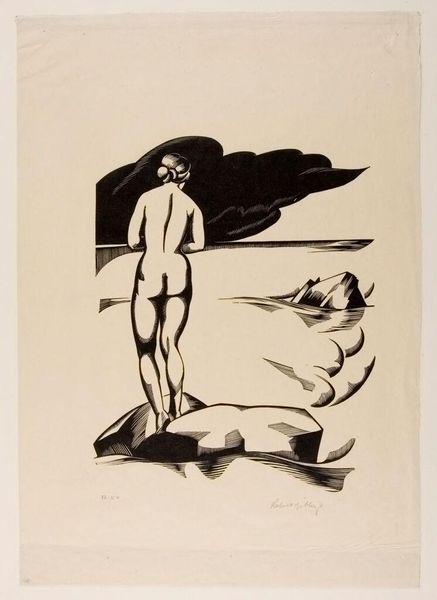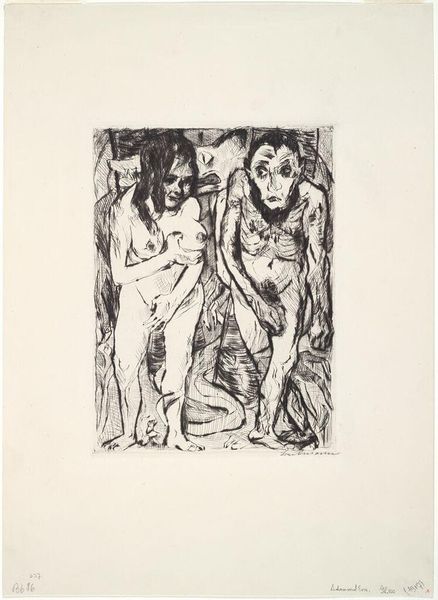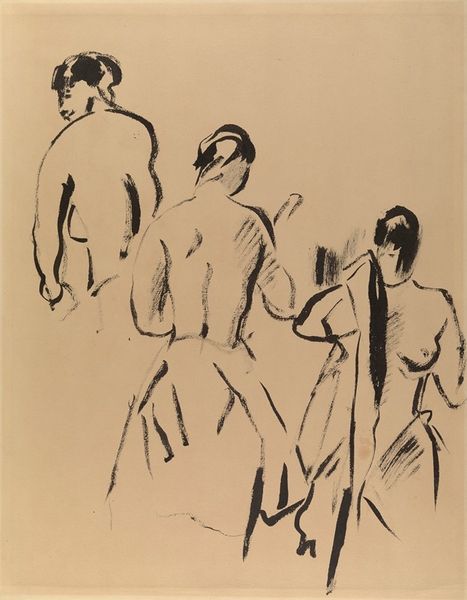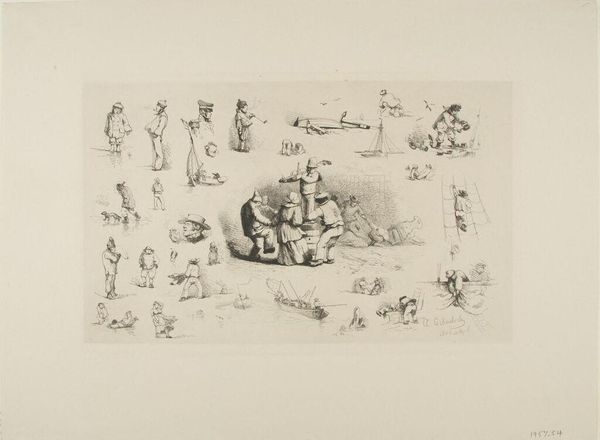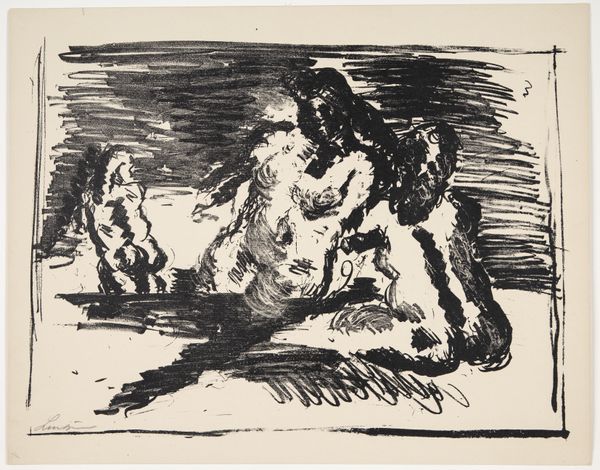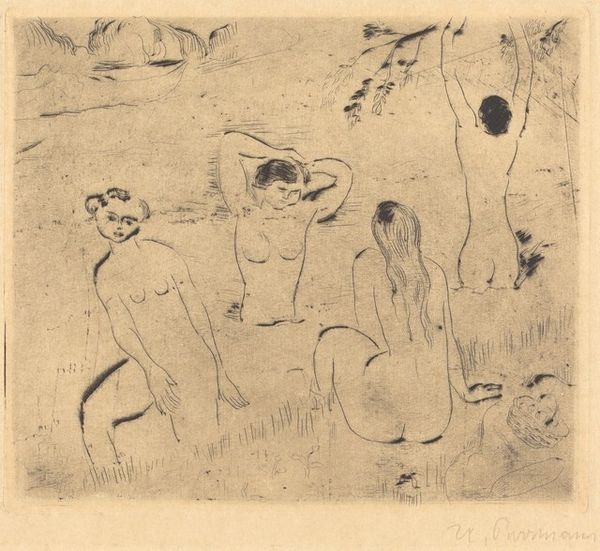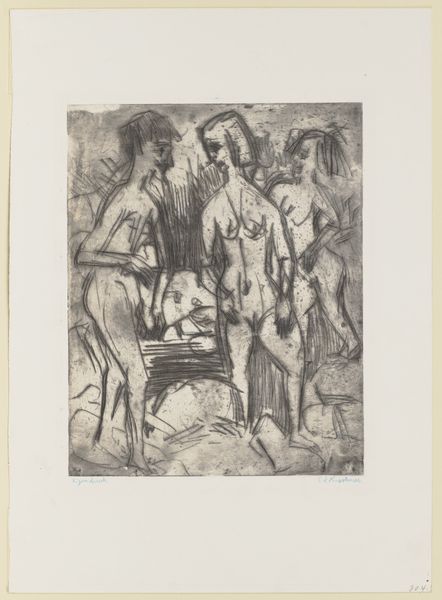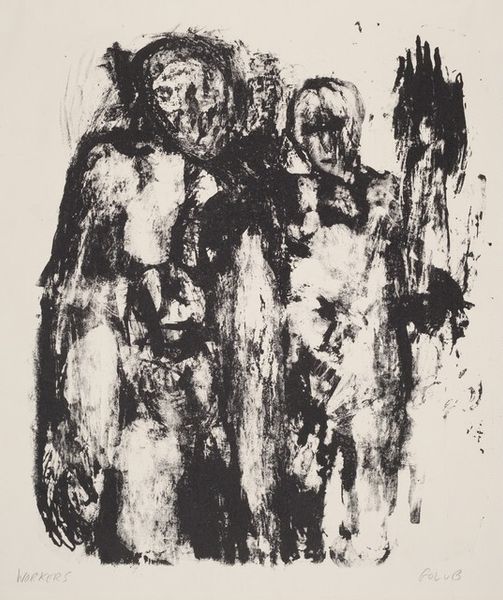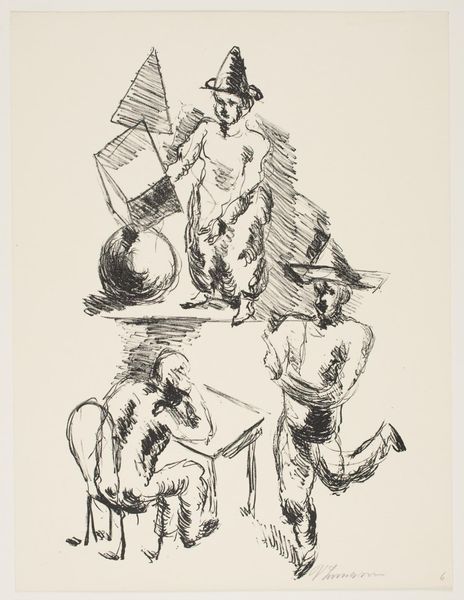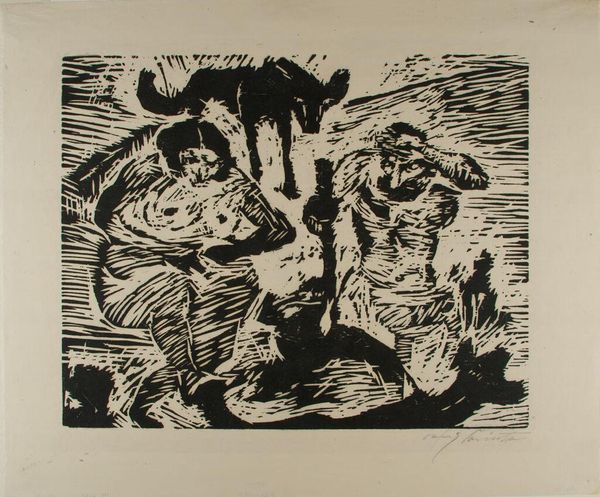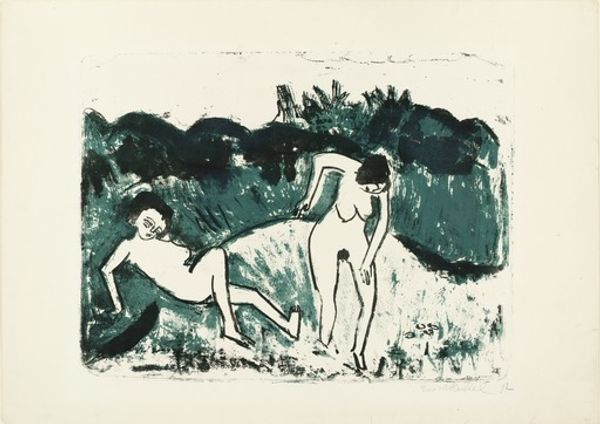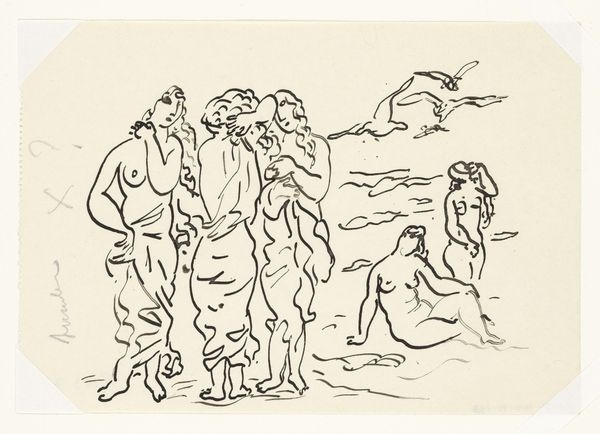
drawing, lithograph, print, ink
#
drawing
#
ink drawing
#
lithograph
# print
#
landscape
#
figuration
#
ink
#
expressionism
Dimensions: 357 mm (height) x 433 mm (width) (bladmaal)
Editor: So, this is "Figurgruppe med stående mand i midten," a 1919 lithograph and ink drawing by Vilhelm Lundstrom. There's something unsettling about the figures. They feel almost monumental, yet strangely vulnerable in their bareness. What do you see in this piece that helps understand its impact and significance? Curator: Well, placed within the context of post-World War I Europe, its stark figuration screams social upheaval. Lundstrom was, broadly speaking, an Expressionist, and this lithograph speaks volumes about the Expressionist desire to critique traditional societal values through stark, unflinching portrayals of the human condition. The figures, with their raw and unidealized bodies, challenge conventional notions of beauty and heroism, don't they? What message about society is Lundstrom projecting through the bareness that struck you initially? Editor: Perhaps a sense of exposure? The war stripped away illusions, leaving people vulnerable and uncertain, but this group dynamic seems staged to create visual tension and drama. Curator: Exactly! It also implicates the viewer, challenging us to confront uncomfortable realities. In its time, this work questioned existing art and societal norms. Its public role was to provoke dialogue about social realities and prompt change. How do you see that role extending to today's museum audience? Editor: I suppose that while societal anxieties change, our discomfort with the bare human form and our societal tendency to ignore those in distress remains, in certain ways. Curator: Precisely! This work becomes a continuous reminder to consider those socio-political frameworks shaping our understanding of each other, both then and now. Editor: It is interesting to consider its commentary through the lens of social structures, instead of a more modern psychoanalytical viewpoint. Thank you! Curator: A great piece for challenging norms on an historical and present front, wouldn’t you agree?
Comments
No comments
Be the first to comment and join the conversation on the ultimate creative platform.
